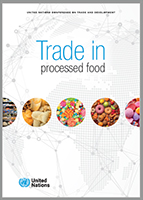Trade in processed food
Access to safe and nutritious food is essential for good health and is linked to Universal Health Coverage (UHC) and the United Nations Sustainable Development Goals (SDGs), particularly SDG 2: Zero Hunger and SDG 3: Good Health and Well-being. Recognizing the pivotal role of access to adequate, safe, and nutritious food in achieving these goals highlights the critical interconnectedness between food access, health, and international development objectives. (United Nations, 2023; World Health Organization, 2023; United Nations, 2015)
While a universally accepted definition of 'healthy foods' is lacking, it can be generally understood as foods which positively contribute to overall health and well-being. In this work, the United Nations Trade and Development (UNCTAD) when addressing the healthiness of food relies on expertise of the World Health Organization (WHO), which takes a holistic approach, emphasizing the importance of an overall healthy diet. Foods that contribute to a healthy diet are those that are nutrient-dense, rich in naturally occurring fibre and/or unsaturated fatty acids, low in saturated fatty acids, trans-fatty acids, free sugars and salt, and free of non-sugar sweeteners. If information is available on a food’s nutritional composition, it can be classified or ranked for reasons related to preventing disease and promoting health using nutrient profiling methods.
To understand the complex environment around the question of health, food, and nutrient intake, UNCTAD paired with WHO to undertake a study on trade in healthy food. Initially, this project aimed to identify trade patterns in the import and export of “healthy” foods by economy by correlating food healthiness with the classification of commodities used to monitor international trade, i.e., the Harmonized Commodity Description and Coding System (HS). While the internationally used headings and sub-headings in this commodity description and coding system allows the identification of sugar sweetened beverages (for example juices reported under 20.09 or sweetened milks under 04.02), it does not allow classification or ranking of a broad range of foods according to healthfulness. Therefore a novel two-part approach, where HS categories are grouped into similar categories based on both processing and food groups was developed.
The objective of the project is therefore to identify trends in global food trade, examining contributions to food markets and access at the economy level by level of processing and food group. Importantly, this work avoids inherently framing processing as detrimental. This acknowledges the challenge posed by the lack of a universal definition for 'healthy foods' and underscores the commitment to understanding imported/exported food dynamics without making sweeping judgments about the merits or drawbacks of food processing. Such conceptual work and debate are outside the scope of this technical paper and work at hand and are referred to here merely as providing background information to understand and support the approach taken in linking processing of food to international trade of these commodities.
Food processing categories
The approach adopted here abstains from categorizing foods and processes as 'healthy' or 'unhealthy.' Instead, it assigns a number to major food categories and a letter to broad processing groups, aligning with the original HS groupings and descriptions. This facilitates queries by food or processing category, or a combination of both, offering valuable insights into global food movements and market dynamics. The aim is not to imply increasing 'levels of processing' but to illustrate and understand the trade flow of food by varying level of processing, that is, by kinds of processing and ingredients. This experimental classification involves a mix of processing steps, avoiding a consistent trend of higher processing levels as categories ascend. Nevertheless, they are designed to offer sufficient level of detail for analysis of food items being traded, once linked to the HS. The classification of processed food categories is presented in table 1. For presentation purposes, the trade flows are presented according to aggregated food categories as in table 2.
Table 1. Classification of processed food
| Code | Text |
| A | Raw: unprocessed*, fresh, chilled, frozen |
| B | Minimally processed: cooked, steamed, or dried; crude oils |
| C | Processed: added salt/pickled/brined; added sugar**; smoked |
| D | Processed: fermentation*** / smoking (neither salted nor brined) |
| E | Composite foods; Preparations/refined oils |
| F | Ingredients: spices et al; products provisionally preserved but unsuitable for immediate consumption in that form; ingredients for brewing |
| G | Precursors - seeds, trees etc. for sowing, fertilized eggs, livestock, bees |
Notes:
* Non-alcoholic beverages: will include non-SSBs (unsweetened water).
** Non-alcoholic beverages: will include SSBs; where salted and smoked, salted is identified as processing.
*** Alcoholic beverages.
Table 2. Aggregated food categories
| Code | Text |
| 1 | Vegetables, meals and flours thereof |
| 2 | Fruits |
| 3 | Cereals and grains, flours thereof |
| 4 | Meat, insects (for human consumption) |
| 5 | Poultry |
| 6 | Fish |
| 7 | Shellfish, crustacea, other aquatic spp. |
| 8 | Dairy and dairy products |
| 9 | Eggs |
| 10 | Nuts |
| 11 | Oil seeds and oleaginous fruits, flours thereof |
| 12 | Animal fats and oils |
| 13 | Vegetable fats and oils (assumes nuts, seeds and plant origin) |
| 14 | Non-alcoholic beverages |
| 15 | Alcoholic beverages |
| 16 | Sugars, jams and confectionery |
| 17 | Cocoa and cocoa preparations |
| 18 | Edible preparations and formulations, beyond scope of HS chapters of 1 - 17 |
| 19 | Other, Not Elsewhere Classifiable in the above categories *also allowing for future evolution of market or HS in response to technology |
Trade matrix of processed food categories
In the trade matrix of processed food categories trade flows are observed by reporting and partner economy, but also provided for several pre-defined groups of economies. Underlying data for this trade matrix are from the UN Comtrade database. The resulting trade matrix is available in UNCTADstat Data Centre and provides trade by food category, detailed by food processing or, alternatively, trade by food processing, detailed by food category. The following are available.
Trade by food processing, detailed by food category
- Value, expressed in US dollars, year-on-year growth rate, share of total merchandise, and share of total food in per cent;
- Revealed Comparative Advantage (RCA) indicator.
Trade by food category, detailed by food processing
- Value, expressed in US dollars, year-on-year growth rate, share of total merchandise, and share of total food in per cent;
- Revealed Comparative Advantage (RCA) indicator.
Using the trade matrix of processing by food categories, users are advised to exert usual caution when using and interpreting the data, such as: the limitations of UN Comtrade (the main data source); this is not a balanced nor imputed trade matrix; it is worth mentioning that trade flows do not always imply domestic consumption; trade flows are measured in value, not volume. This may impact direct comparison of values of different processing groups, as such values may include for example packaging values. These considerations need to be accounted for in any interpretation of results of the analysis and in informing policies, to provide a reliable and robust evidence base (to be complemented with additional subject expertise). Given the above challenges, this table is marked as analytical rather than official statistics.
Visualizations
Trade by food processing
Million of United States dollars
Documentation and publications
In the classification page you can access the detailed HS-processing food categories correspondence tables.
References
- United Nations (2023a). Sustainable Development Goals: the 17 goals. Available at https://sdgs.un.org/goals# (accessed 15 December 2023).
- United Nations (2015). Transforming our world: the 2030 Agenda for Sustainable Development. No.A/RES/70/1. New York. (accessed 12 December 2023).
- World Health Organization (2023). Universal health coverage. Available at https://www.who.int/health-topics/universal-health-coverage (accessed 15 December 2023).
This page was created within the WHO – UNCTAD project Development of an Information System for Trade in Healthy Food in 2022-2023.

 Trade in processed food
Trade in processed food
